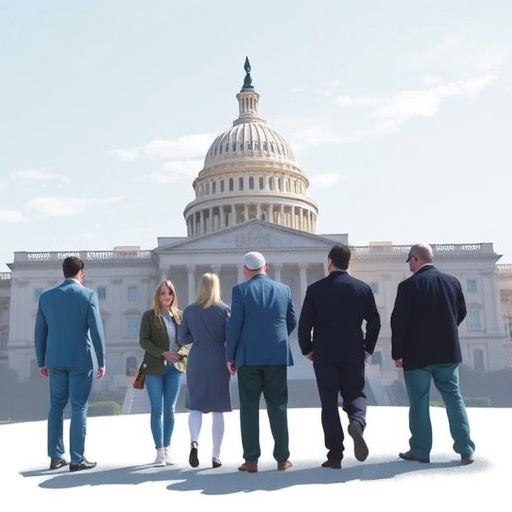Senate Democrats Urge ACA Subsidies Extension as Government Shutdown Threatens Millions’ Health Coverage
In a high-stakes push amid the escalating government shutdown, Senate Democrats are sounding the alarm on the looming expiration of Affordable Care Act (ACA) subsidies, warning that up to 20 million Americans could lose enhanced health care coverage just as the open enrollment period kicks off. With federal agencies paralyzed and partisan gridlock deepening, leaders like Senate Majority Leader Chuck Schumer have vowed to make the renewal of these critical ACA subsidies a top priority, framing it as a life-or-death issue for families nationwide.
The shutdown, now stretching into its third week, has already disrupted essential services, but its potential impact on health care enrollment is proving particularly dire. Democrats argue that without swift action, premium assistance programs that have kept insurance affordable for low- and middle-income households will vanish, spiking costs and deterring sign-ups during the vital November 1 enrollment window. “This isn’t just about politics; it’s about people’s health,” Schumer declared in a fiery floor speech on Tuesday, emphasizing the human cost of the stalemate.
According to the Kaiser Family Foundation, enhanced ACA subsidies introduced under the American Rescue Plan Act of 2021 have driven record enrollment, with over 21 million people selecting plans through HealthCare.gov last year—a 13% increase from the previous year. These subsidies cap premiums at 8.5% of household income for many, but they are set to expire at the end of 2025 unless Congress intervenes. As the government shutdown drags on, funded by short-term resolutions but threatened by ongoing budget disputes, the urgency to address this deadline has never been clearer.
Democrats Rally Against Shutdown’s Health Care Fallout
Senate Democrats are leveraging the ongoing government shutdown to spotlight the vulnerabilities in the ACA framework, particularly the subsidies that underpin affordable health care for millions. In a series of coordinated press conferences and bipartisan outreach efforts, key figures have highlighted how the impasse is exacerbating fears over coverage loss. The shutdown, triggered by disagreements over spending bills and border security funding, has furloughed thousands of federal workers and halted operations at agencies like the Centers for Medicare & Medicaid Services (CMS), which oversees ACA enrollment.
“The government shutdown is not just closing offices—it’s closing doors on health care access,” said Sen. Elizabeth Warren (D-Mass.), a vocal advocate for expanding the ACA. Warren pointed to data from the Department of Health and Human Services showing that subsidy enhancements have reduced the uninsured rate to a historic low of 7.7% in 2023. Without extension, she warned, premiums could surge by an average of $700 annually for a family of four earning $60,000, based on projections from the Congressional Budget Office (CBO).
The Democratic strategy involves attaching ACA subsidy extensions to must-pass legislation, such as a continuing resolution to end the shutdown. This tactic aims to force Republican buy-in, as polls from Gallup indicate that 62% of Americans support maintaining or expanding ACA provisions. However, GOP leaders have resisted, citing fiscal concerns and tying negotiations to demands for deeper spending cuts. Senate Minority Leader Mitch McConnell has called the subsidies “unsustainable entitlements,” complicating bipartisan talks.
Behind the scenes, Democratic whips are counting votes, with moderate Republicans like Sens. Susan Collins (R-Maine) and Lisa Murkowski (R-Alaska) emerging as potential swing votes. Collins, whose state relies heavily on ACA marketplaces, has expressed concerns about enrollment disruptions, noting that Maine saw a 20% uptick in sign-ups last year thanks to subsidies.
ACA Enrollment Window Looms Large Amid Funding Freeze
As the annual open enrollment for ACA plans approaches on November 1, the government shutdown’s freeze on federal funding is casting a long shadow over health care navigation. Enrollment periods are critical for updating coverage, and last year’s success— with 16.3 million enrolling through the federal marketplace alone—hinged on robust CMS support, including call centers and website maintenance. Now, with non-essential personnel sidelined, experts fear technical glitches and reduced outreach could slash participation rates.
The Urban Institute estimates that if subsidies lapse without renewal, an additional 4 million people could become uninsured by 2026, disproportionately affecting rural and minority communities. Senate Democrats, including members of the Senate Health, Education, Labor, and Pensions (HELP) Committee, are pushing for emergency funding to keep enrollment portals operational. “We can’t let bureaucracy become a barrier to care,” urged Sen. Bernie Sanders (I-Vt.), who caucuses with Democrats and has long championed universal health care.
Personal stories are amplifying the Democrats’ message. In Ohio, a battleground state, single mother Maria Gonzalez shared her plight with reporters: “These subsidies mean the difference between seeing a doctor for my kids’ asthma and skipping meals. The shutdown is making everything harder.” Gonzalez’s testimony, echoed in Democratic-led hearings, underscores the real-world stakes. Meanwhile, advocacy groups like Families USA are mobilizing grassroots campaigns, urging constituents to contact senators about the ACA subsidies.
Statistically, the impact is stark: The ACA has covered pre-existing conditions for 135 million Americans, and subsidies have made plans viable for 80% of enrollees. A recent report from the Commonwealth Fund projects that without extensions, marketplace enrollment could drop by 40%, leading to higher premiums for those who remain insured due to adverse selection.
Senate Leaders Outline Path to Subsidy Renewal
At the forefront of the Senate Democrats’ efforts is a detailed legislative blueprint aimed at securing ACA subsidies beyond their current sunset date. The proposed bill, dubbed the “Health Care Affordability Act,” would permanently extend premium tax credits and expand eligibility to households earning up to 400% of the federal poverty level—roughly $58,320 for an individual. Introduced by Sen. Ron Wyden (D-Ore.), the measure includes provisions for enhanced outreach during enrollment periods, even in shutdown scenarios.
Wyden, chair of the Senate Finance Committee, hosted a virtual roundtable with health economists and insurers on Wednesday, where panelists stressed the economic ripple effects. “Losing these subsidies could cost the economy $200 billion in lost productivity and increased emergency care spending,” said Dr. Emily Yee, a policy analyst at the Brookings Institution. The event drew over 5,000 online viewers, amplifying Democratic messaging on social media platforms.
Negotiations are intensifying, with Democrats floating compromises like tying subsidy extensions to modest deficit reductions. However, the government shutdown complicates matters, as furloughed staff at the CBO delay cost analyses. Republicans, led by Sen. Mike Crapo (R-Idaho), counter that the subsidies inflate federal deficits by $250 billion over a decade, per CBO estimates, and demand offsets through Medicaid reforms.
Yet, momentum is building. A coalition of 45 Democratic senators has signed a discharge petition to force a vote on the subsidies, bypassing committee hurdles. This move, rare but effective in past ACA battles, signals determination. As one aide noted anonymously, “We’re prepared to go to the mat—health care isn’t negotiable in a shutdown.”
Broader Implications: Shutdown’s Toll on National Health Landscape
The protracted government shutdown is not only stalling ACA subsidy talks but also straining the broader health care ecosystem. Hospitals are delaying non-emergency procedures due to unpaid Medicare reimbursements, and community health centers—vital for underserved areas—are facing cash flow crises. Senate Democrats have linked these issues to their subsidy push, arguing that a holistic approach is needed to safeguard enrollment and coverage continuity.
Historical precedents underscore the risks. During the 2018-2019 shutdown, the longest in U.S. history at 35 days, ACA enrollment dipped by 2%, according to CMS data, with navigators overwhelmed by inquiries. This time, with inflation eroding wages and medical costs rising 4.1% annually (per the Bureau of Labor Statistics), the stakes are higher. Democrats are citing these lessons to rally public support, with a recent AP-NORC poll showing 58% of respondents blaming Republicans for the shutdown’s health impacts.
State-level responses are filling some gaps. California and New York, Democratic strongholds, have allocated state funds for enrollment assistance, but red states like Texas and Florida—home to 40% of uninsured Americans—are hit hardest. Sen. Raphael Warnock (D-Ga.), representing a Southern swing state, has been vocal: “In Georgia, where Medicaid expansion is still a fight, these federal subsidies are our lifeline. The shutdown can’t erase that.”
Insurers are also weighing in, with the American Health Insurance Plans (AHIP) warning of marketplace instability. CEO Mike Tuggle stated, “Uncertainty over subsidies will lead to fewer plans and higher rates—hurting consumers most.” This cross-aisle pressure could sway moderates, as Democrats intensify lobbying.
Looking Ahead: Pathways to Resolution and Enrollment Safeguards
As talks evolve, Senate Democrats are eyeing a post-shutdown surge to lock in ACA subsidy extensions before the holiday recess. Bipartisan working groups are forming, with potential for a slimmed-down bill that renews subsidies through 2027 while incorporating Republican priorities like fraud prevention in enrollment processes. Success here could avert a coverage cliff, ensuring smooth health care transitions for millions.
Looking further, experts predict that resolving the shutdown could unlock $1.5 billion in CMS funding for enrollment marketing, including Spanish-language ads and partnerships with employers. Advocacy continues unabated; organizations like Enroll America are planning nationwide webinars to guide consumers through potential disruptions. If Democrats prevail, projections suggest enrollment could hit 22 million next year, bolstering the ACA’s legacy.
However, failure looms if partisanship persists. The CBO warns of a 10% uninsured rate rise by 2028 without action, straining state budgets and emergency rooms. Senate Democrats remain optimistic, with Schumer pledging, “We’ll fight until every family has access to affordable care.” As the enrollment deadline nears, the battle over ACA subsidies will define not just this shutdown, but the future of American health care.








